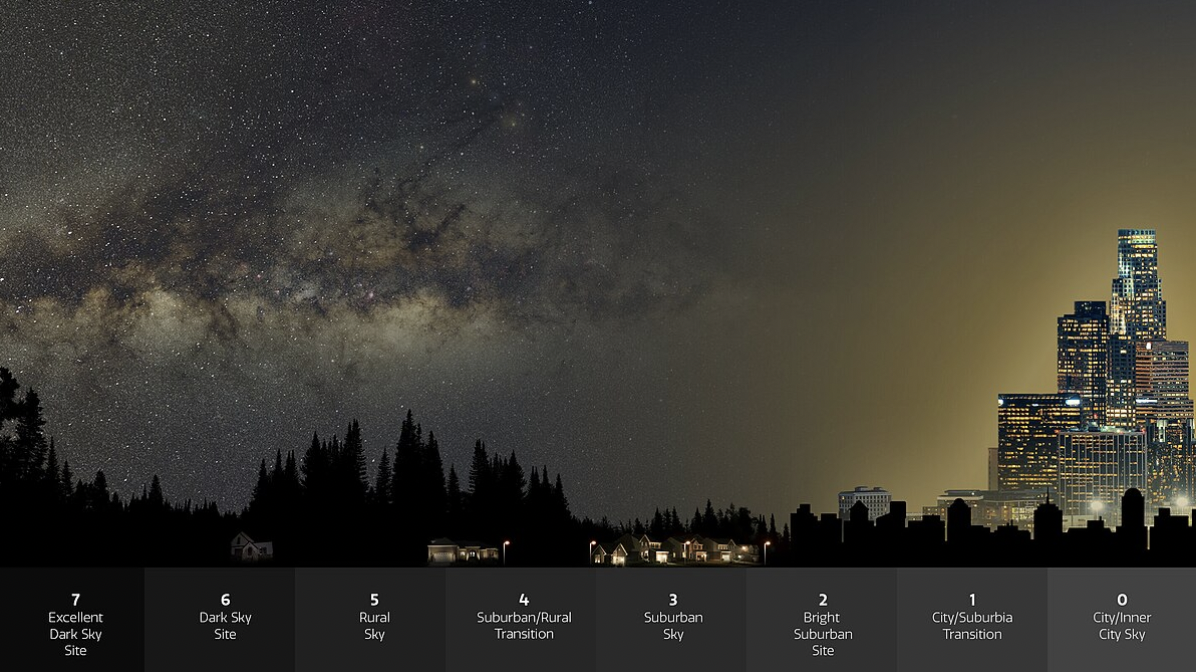The Consequences of Light Pollution on Sky Observation

Category
Infos
Light pollution, the excessive or misdirected artificial light produced by human activities, is a growing environmental issue that significantly affects our ability to observe the night sky. As cities expand and artificial lighting becomes more prevalent, the natural darkness of the night is increasingly compromised. This has serious consequences for astronomers, stargazers, and even ecosystems that rely on natural light cycles.
One of the most immediate effects of light pollution is the reduced visibility of stars, planets, and other celestial bodies. In heavily lit urban areas, the night sky appears washed out, with only the brightest objects, such as the Moon and a few major planets, remaining visible. Fainter stars, nebulae, and galaxies become nearly impossible to observe without traveling to darker rural areas.
Professional and amateur astronomers rely on dark skies for precise observations. Light pollution interferes with telescope imaging, creating glare and reducing contrast, making it difficult to study distant galaxies, nebulae, and exoplanets. Many observatories have had to relocate to remote locations or high-altitude sites to escape urban light pollution.
Skyglow is the brightening of the night sky caused by artificial lighting, which scatters in the atmosphere and creates a persistent glow over cities. This phenomenon obscures fainter celestial objects and significantly limits deep-sky observations. Light domes—large halos of artificial light—can extend dozens of miles from urban centers, affecting even suburban and rural areas.
Events such as meteor showers, eclipses, and the visibility of the Milky Way are greatly diminished in light-polluted areas. The beauty of these natural phenomena is lost to many people living in brightly lit environments, reducing public interest in astronomy and space science.
Light pollution affects not only human sky observation but also wildlife and ecosystems. Many species rely on natural darkness for navigation, reproduction, and survival. For example, sea turtles use moonlight to find their way to the ocean after hatching, and artificial lights can misguide them. Similarly, nocturnal animals experience disrupted hunting and mating behaviors due to excessive illumination.
Exposure to artificial light at night has been linked to sleep disorders and disruptions in the human circadian rhythm. This can lead to increased risks of health issues such as insomnia, stress, and even chronic conditions like obesity and cardiovascular diseases.
One of the most effective ways to combat light pollution is by using shielded and downward-directed lighting that minimizes unnecessary skyward illumination. Many cities have adopted dark-sky-friendly streetlights to reduce glare and wasted light.
Certain areas around the world have been designated as Dark Sky Reserves, where lighting regulations are enforced to preserve the natural darkness of the night. These areas allow for clearer astronomical observations and protect nocturnal wildlife.
Public education on the importance of preserving dark skies is crucial. Events such as International Dark Sky Week help highlight the impact of light pollution and encourage communities to take action.
Light pollution is a serious but often overlooked environmental issue that significantly impacts our ability to observe and study the night sky. By adopting better lighting practices, supporting dark sky initiatives, and raising awareness, we can help restore the beauty of the night sky for future generations and ensure that both astronomers and the general public can continue to explore the wonders of the universe.
Anna MARTELLI 2-8


